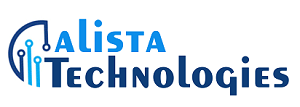
Solar Panel Technologies Trends Shaping the Future
As the world is in an era of energy revolution where all efforts move towards clean energy, solar power is an important factor. Renewable electricity is anticipated to surpass coal as the globe’s leading energy source, a pivotal step towards the world’s effort to deal with negative effects of climate change. This shift is been enabled by innovations in solar technologies that are rapidly evolving to meet the increasing demand for clean energy. Energy trends are shaping how we think about solar energy, enabling us to trust it more. Today, existing solar projects are being retrofitted with battery storage to increase flexibility and efficiency.
The advancements in solar technology are enhancing performance in solar installation and create job opportunities in renewable sector. Additionally, the global community is working as one towards adoption of policies that favor solar energy adoption. These new solar panel technologies are making solar photovoltaic (PV) more accessible and efficient than before. The primary goal of these advancements and changes is driven by the need to achieve sustainable energy sources than fuel growth of electrification and data centers. This post will help us discover more about the latest solar technology trends that are leading in shaping the future of clean energy.
Efficiency Skyrockets with Solar Panel Technologies
One of the biggest reasons why the world is moving towards clean energy such as solar power is the need for increased efficiency. For this reason, solar panel technologies are aimed at increasing efficiency. Over the past few decades, solar panel efficiency has seen remarkable advancement. In the past solar panels conversion efficiency was 10%. This means that they could only convert a tenth of the sunlight they receive into usable electricity. Today, solar panel efficiency rates have greatly increased due to technological advancements, developments, and continuous research.
Today’s solar panels conversion rate is twice that of the past, which means they convert more than 20% of the sunlight they capture to usable electricity. All this has been made possible by technology advancements in energy. This means that solar PV systems can covert nearly the quarter of the sunlight they get into clean, renewable energy. The advancements continue to enhance solar power efficiency as a sustainable source of energy. Higher efficiencies have made solar energy more reliable and attractive option for businesses and homeowners and reduces the space requires for solar panels. The efficiency has also reduced the cost of solar power, making more desirable and accessible to a wider audience globally.
Bifacial Solar Panel Technology Harnessing more light
Bifacial solar panel technology harnesses more sunlight through its unique feature of capturing sunlight from the front and back of the module. It is an innovative design that allows solar panels you utilize reflected sunlight from various surfaces like water, ground or close structures, leading to high energy yield. Advancements in bifacial solar panel technology have tremendously increased their demand in the renewable energy industry. Moreover, the global market of bifacial solar technology has seen remarkable shift due to provision of clean energy, reduced costs, enhanced efficiency and significant environmental advantages.
One benefit is higher energy yield since it captures sunlight from both sides with the help of new solar technology. Another benefit is that they are durable as they are built to withstand environmental conditions. With regular Solar panel testing, many models will perform well and last longer. Bifacial panels are also perfect for areas with cloudy or low light because they can generate energy from diffuse or reflected light. However, they are expensive when compared to other options due advanced solar technology. They are also prone to dirt and duct accumulation because they are exposed, requiring frequent cleaning.
Solar Panel Technology Has Become Flexible and Lightweight
The continuing innovations in solar panel technology have led to creation of lightweight and flexible solar panel, changing how and where solar energy can be used. Utilization of advanced materials such as organic photovoltaic and ultra-thin silicon has enabled researchers to develop solar modules that are bendable, thin and light to be installed where traditional panels could not fit. A recent major advancement in solar panel technology is ultra-light fabric solar cells, thinner than human hair that can be laminated into virtually any space.
Despite their light weight, they can generate power 20 times more than traditional PV panels, demonstrating efficiency. The light weight solar panels can be ne easily transported and installed in remote or off-grid locations. They can also be rolled up, and shipped compactly without requiring heavy hardware. This flexibility has made it possible to provide solar power in areas with minimal infrastructure, offering reliable, clean source of energy.
Optimizing Renewable Energy with Energy Storage
The integration of energy storage systems with solar panels is anticipated to see significant changes and updates in days to come. Creation of more advanced battery technologies is among the main areas of focus. Researchers are using advanced materials such as lithium-ion to design batteries that can store high energy for solar panels. These batteries provide higher energy rates, improved charging and discharging capabilities, and longer lifespan, allowing efficient utilization of stores energy.
Advancement in battery management systems is expected to play a great role in solar technology future, allowing control and optimization of energy storage. The systems will allow users to maximize the use of store energy on basis of demand and grid conditions, leading to cost savings and increased energy efficiency.
Aesthetic Appeal of Transparent Solar Panel Technology
Development of transparent solar panels is among the most appreciated innovations in solar panel technology. It not only provides energy efficiency but also exhibits aesthetic appeal. Architectural designers are using advanced materials such as transparent luminescent solar concentrators to make better solar panels. This technology allows surfaces such as windows, skylights, and facades to double as energy harvesting devices without affecting light transmission.
Unlike traditional PV modules that only prioritize on maximum efficiency, transparent PV glass aims on selective light absorption, capturing wavelengths and ultraviolet, while allowing visible light pass through. This makes the option more desirable for buildings integrated with PV where both aesthetic and day lighting are essential.
The globe is focused on achieving more sustainable solutions, and clean and renewable energy is among the important drivers. Solar panels are among the most important aspects in clean energy. The continued advanced and innovations in solar panel aim at increasing efficiency, benefiting the environment, reducing costs, and attaining aesthetics. Development of flexible and lightweight solar panels enables installation in areas that traditional panels could not fit. The current solar panels such as bifacial solar panels that can capture light from both sides and cover about a quarter of the sunlight captured to usable power increases energy power efficiency. Better storage options are giving solar panels long lifespan, becoming a better investment.






